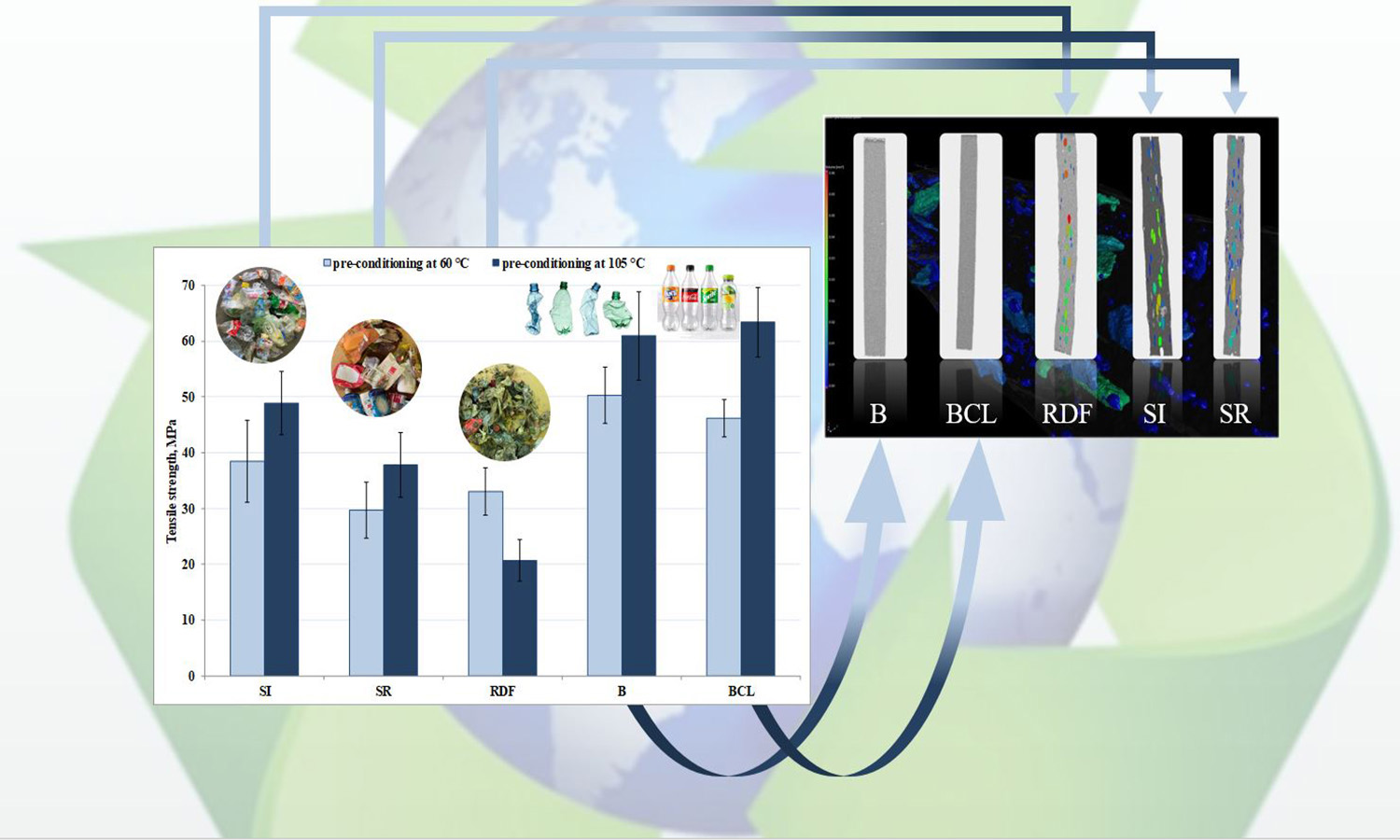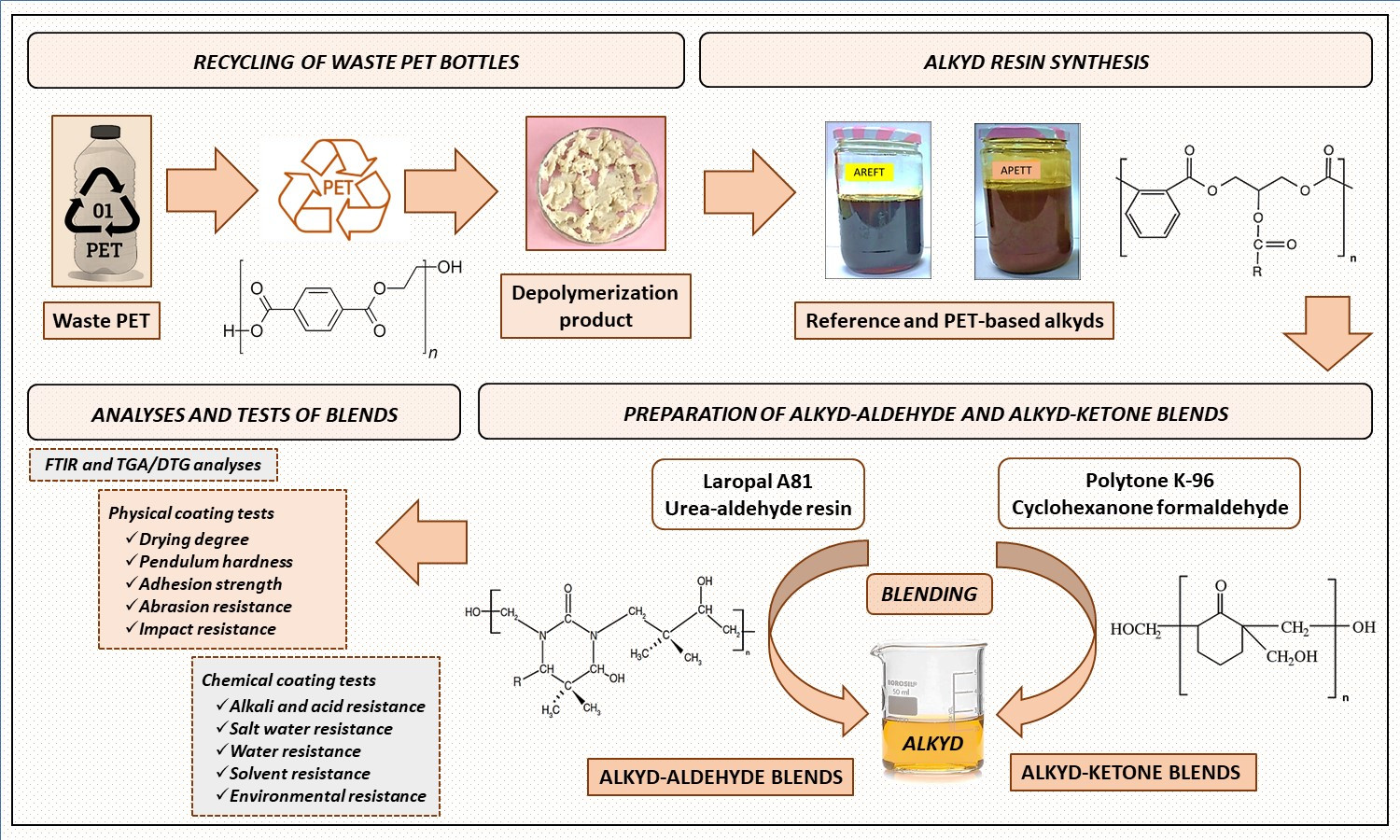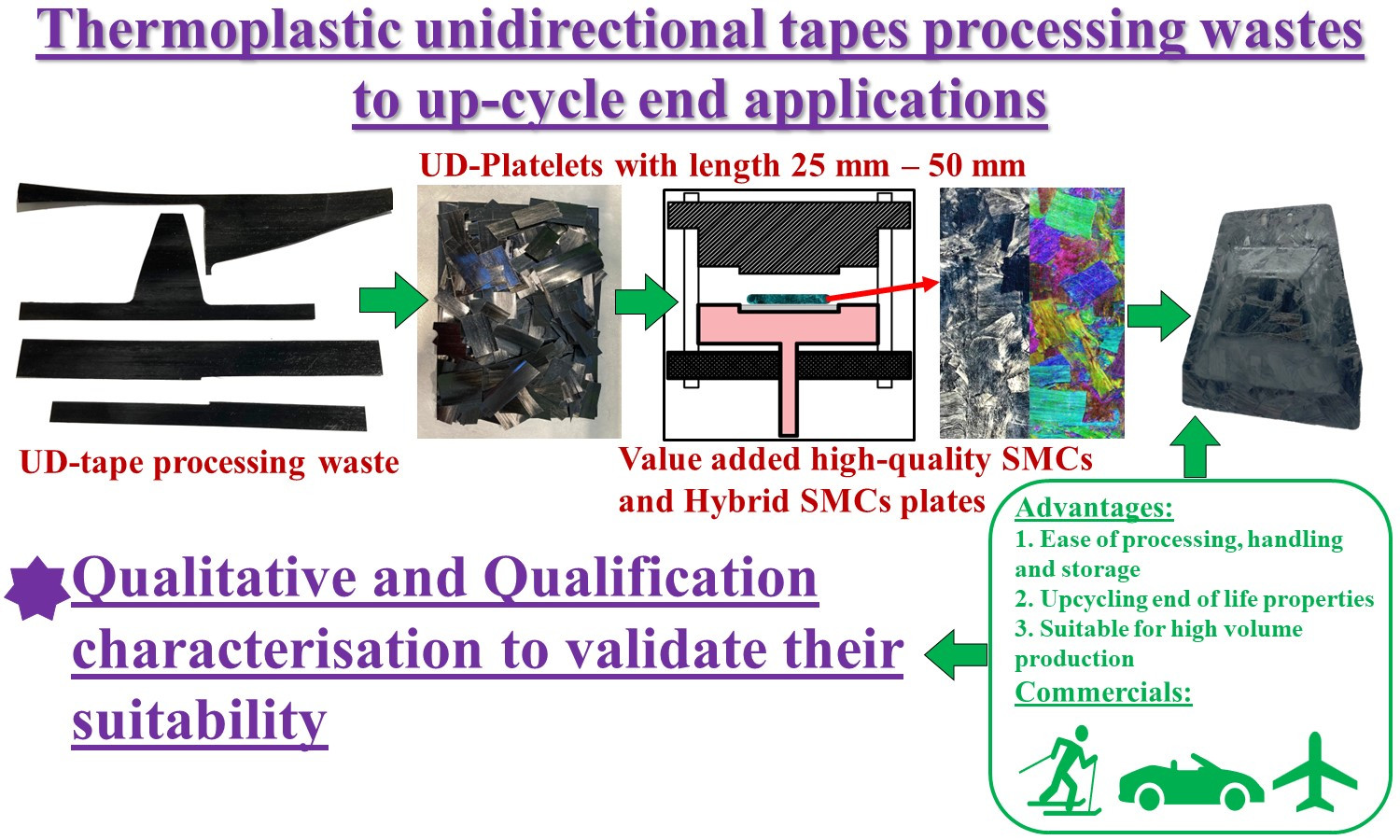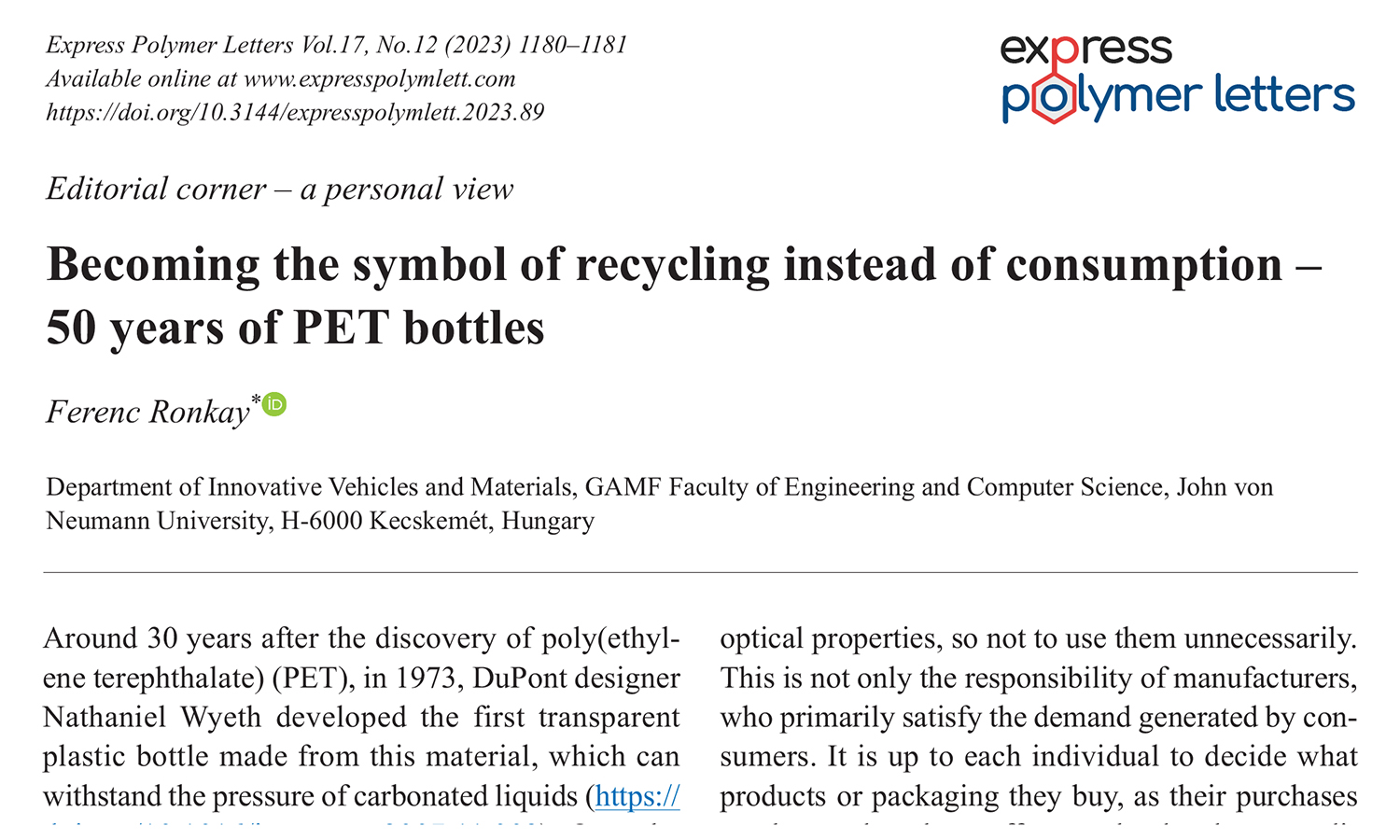How introduction of deposit-refund system (DRS) changes recycling of non-drinking bottle PET wastes
Vol. 17., No.11., Pages 1166-1179, 2023
DOI: 10.3144/expresspolymlett.2023.88
DOI: 10.3144/expresspolymlett.2023.88
GRAPHICAL ABSTRACT

ABSTRACT
Under
the era of circular economy, the deposit-refund system (DRS) for e.g. polyethylene
terephthalate (PET) is thought to be a good choice to achieve a more structured
plastic recycling. The present research has the aim to make a comprehensive description
and a practical guideline in order to evaluate how collection and separation
system influence the quality and efficiency of mechanical recycling of PET. The
DRS has been symbolized by manually collected bottles with (BCL) and without
(B) caps and labels. Samples have been given from the selective income (SI) and
the sorting residue (SR) of a manual selective waste sorting plant and PET
fraction of refuse derived fuel (RDF). Based on preliminary qualification results
such as melt flow indices (MFI), PET bottles are worth selecting into the main
colours like water clear, blue, and all the others together, referred to as
PET-A, PET-B, and PET-D fractions of the sorting plant. The SR seemed to be a beneficial
raw material for PET recycling as both mechanical and rheological properties
were proper enough. PET separated from the Mechanical Biological Treatment
(MBT) plant as RDF showed the worst processing and mechanical properties, but
both can be improved with deeper precleaning. X-ray tomography (CT) scans have
shown a correlation between the source of waste and the gas void structure
which influence the macroscopic mechanical properties.
RELATED ARTICLES
Tuğba Erol, Eren Yıldırım, Işıl Acar
Vol. 18., No.12., Pages 1224-1264, 2024
DOI: 10.3144/expresspolymlett.2024.93
Vol. 18., No.12., Pages 1224-1264, 2024
DOI: 10.3144/expresspolymlett.2024.93

This study aims to develop alkyd-aldehyde and alkyd-ketone blends by modification of waste poly(ethylene terephthalate) (PET) based alkyd resin with urea-aldehyde (UA) and cyclohexanone formaldehyde (CHF) resins for use in coating applications. PET flakes were depolymerized by simultaneous hydrolysis-glycolysis reaction, and depolymerization product (DP) was used completely instead of the diol in the alkyd synthesis. For comparison, reference alkyds without PET were also synthesized. The effect of modifier resin at different ratios and the presence of DP on the coating and thermal properties of blend films were investigated. Medium-hard/hard and gloss/high gloss films with excellent adhesion and impact resistance were obtained from both blends. These films also demonstrated superior chemical and environmental resistance. Blends with CHF resin had better alkali resistance than those with UA resin. In PET-based blends, thermal resistance significantly increased with the addition of the CHF resin to the alkyd resin. Notably, the use of DP did not show a negative effect on the properties of alkyd resin and blend films. On the contrary, much better results were obtained than the alkyd resin alone. Overall, the modification with UA and CHF modifiers and using DP improved the coating properties of the blends. These blends are expected to be considered a sustainable and environmentally friendly alternative for designing versatile coatings for various applications.
Chethan Savandaiah, Andreas Kapshammer, Bernhard Plank, Vanja Stolcer, Christian Marschik, Zoltan Major
Vol. 18., No.9., Pages 883-900, 2024
DOI: 10.3144/expresspolymlett.2024.66
Vol. 18., No.9., Pages 883-900, 2024
DOI: 10.3144/expresspolymlett.2024.66

Thermoplastic (TP) composites, known for their ease of handling, suitability for high production rates, and recyclability, are emerging as a promising alternative to thermoset-based composites. The expected growth in TP-based composites in automotive, sports, and aerospace industries may result in increased post industrial waste. To address this, we repurposed our in-house process scrapped carbon fibre-reinforced polycarbonate tapes into sheet moulding compounds (SMCs) and Hybridised SMCs (Hy-SMCs) using compression moulding. In Hy-SMCs, the top and bottom layers were unidirectional tapes, while the core section had randomly oriented platelets in a 50:50 ratio. Our evaluation included qualitative and thermo-mechanical standard tests. The incorporation of unidirectional tapes in Hy-SMCs significantly improved the tensile and flexural properties of SMCs. Specifically, these enhancements resulted in an impressive 81 to 85% increase in mechanical strength compared to the standard aluminium grade. Additionally, Hy-SMCs exhibited a 120 to 130% increase in tensile and flexural properties compared to SMCs. Fractography revealed a complex relation between fractured surfaces, with multimode failures in both SMCs and Hy-SMCs. Also, the non-destructive evaluation showed platelet reorientation during consolidation and localised voids with increased specimen thickness.
Ferenc Ronkay
Vol. 17., No.12., Pages 1180-1181, 2023
DOI: 10.3144/expresspolymlett.2023.89
Vol. 17., No.12., Pages 1180-1181, 2023
DOI: 10.3144/expresspolymlett.2023.89

This is an editorial article. It has no abstract.




